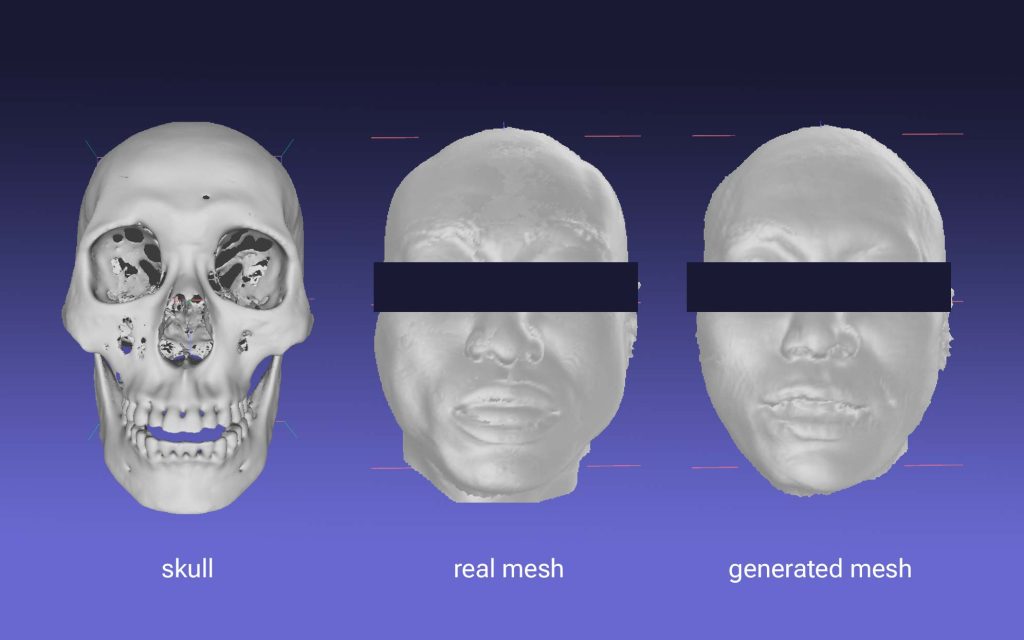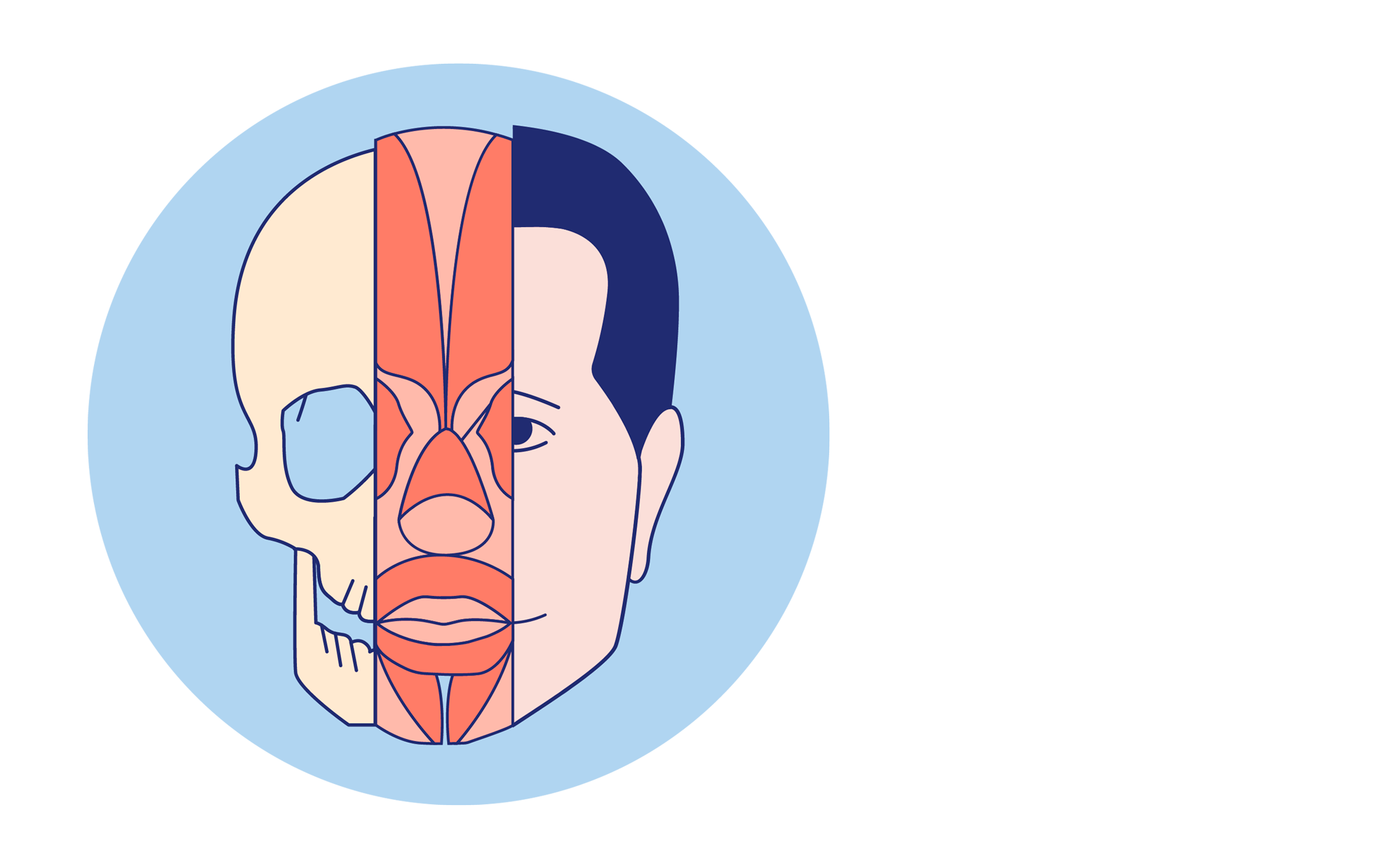The FACEGEN project
Forensic human identification is an essential step in both criminal investigations and humanitarian efforts. Traditional methods such as DNA profiling, fingerprints, and dental charts are often highly reliable. Still, they depend on the availability of ante-mortem data and the physical condition of the remains. Unfortunately, in many cases, particularly after natural disasters, armed conflicts, or when dealing with remains that are decades old, these methods cannot be applied.
In such scenarios, forensic anthropology provides alternative routes. One of these is Craniofacial Reconstruction (CFR), the process of recreating a person’s facial appearance starting from their skull. CFR is based on the well-established correlation between bone structure and soft tissue morphology. Today, however, it remains largely a manual process, requiring the expertise of highly specialized forensic artists. These reconstructions are costly, time-intensive, and difficult to scale.
This is where AI and, in particular, generative AI enter the picture. Recent advances in image generation models and high-performance computing resources have opened the door to automating CFR in a way that was unthinkable just a few years ago. By training AI systems to learn from large collections of images, it is now possible to model the relationship between skull shapes and facial features. For forensic practitioners, this will mean faster, more reproducible, and objective reconstructions. For society, it offers new ways to provide closure in unsolved cases and to address the growing number of unidentified remains worldwide.

Panacea’s Expertise and Contributions
Panacea Cooperative Research is a technology-driven SME specializing in AI applications for forensics. With a team of researchers spanning forensic anthropology, AI, and genetics, Panacea has already brought innovation to the field with its flagship product Skeleton-ID, which automates methods like craniofacial superimposition and comparative radiography.
Panacea’s approach emphasizes data-driven, transparent, and reproducible methodologies. This ensures that forensic practitioners retain agency in the decision-making process while benefiting from significant gains in efficiency and accuracy. FACEGEN builds directly on this expertise: leveraging Panacea’s experience in model development, validation, and software deployment in real-world forensic contexts.
The FACEGEN’s Consortium
The FACEGEN project is coordinated by Panacea but developed together with two strong partners:
- University of Granada, Spain – bringing expertise in trustworthy AI and biomedical image processing, ensuring that the models are both technically robust and ethically sound.
- INRIA, France – contributing advanced research in generative AI for image generation, with a track record in both academic innovation and industrial collaborations.
This consortium bridges academic excellence with applied forensic needs, ensuring that FACEGEN’s outcomes are both scientifically validated and practically deployable.
FACEGEN’s Technical Focus

The central goal of FACEGEN is to develop a functional, automated CFR model using generative AI. To this end, the project is exploring different model families, each with its strengths:
- Conditional Generative Adversarial Networks (GANs)
- GANs are widely used in image generation tasks. In CFR, a conditional GAN can be trained to take a skull representation as input and generate a plausible corresponding face.
- FACEGEN is testing two representations:
- Volumetric images (3D matrices) which are precise but computationally heavy.
- Multi-view depth maps (2.5D) which are lighter and can be more efficient in training.
- Foundation Diffusion Models
- Building on large-scale pre-trained diffusion models (e.g., Stable Diffusion), FACEGEN fine-tunes them for the CFR task.
- These models already encode a vast amount of knowledge about human facial anatomy, which can be adapted using medical imaging data.
- The generation process is guided conditioning the model on skull-derived depth maps. This allows the model to generate consistent, realistic faces aligned with the bone structure.
Metadata such as sex, age, and body mass index (BMI) are also introduced as conditioning factors, improving accuracy.
Together, these approaches are being rigorously compared in terms of accuracy and forensic usability.
Toward Practical and Ethical Forensic AI
FACEGEN is more than a technical exercise—it addresses the specific needs and constraints of forensic practice. Transparency, bias mitigation, and interpretability are key pillars of the project. The models are evaluated not only on conventional image similarity metrics but also in terms of how well they perform in identification scenarios. In addition, bias quantification and mitigation seek to avoid differential performance of the models for particular groups.
By integrating this work into Panacea’s Skeleton-ID platform and offering scalable services (including SaaS), FACEGEN aims to make CFR accessible to forensic institutions worldwide. Beyond forensics, potential applications extend into archaeology and museum research, offering scientifically grounded reconstructions of historical figures.
Looking Forward
The current phase of FACEGEN focuses on leveraging generative AI to reproduce facial morphology. Future work will incorporate DNA-based phenotypic information (e.g., eye and hair color) and move toward photorealistic 3D reconstructions, combining skeletal and genetic data.
In doing so, FACEGEN is setting the stage for a new generation of forensic identification tools, fast, reliable, and globally accessible, while keeping scientific rigor and ethical responsibility at its core.
